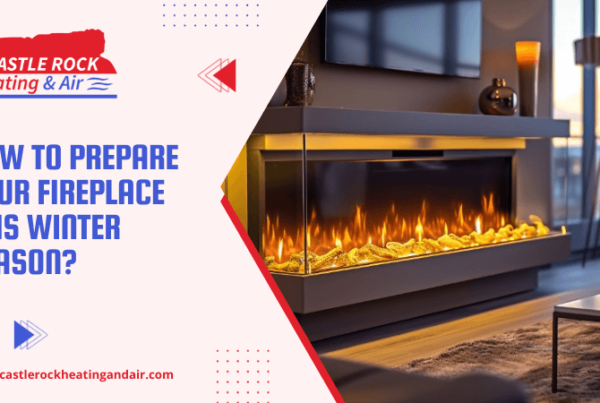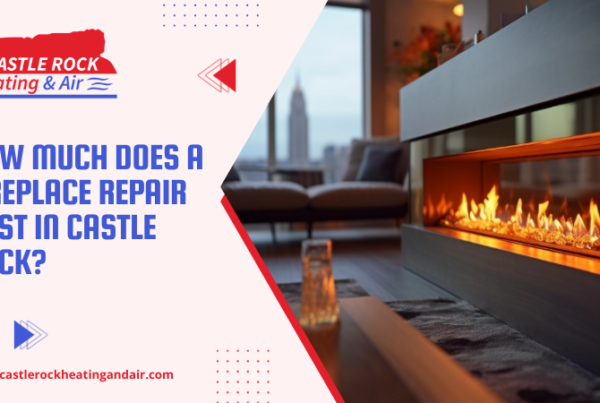
Gas fireplaces are a popular way to heat your home and enjoy the warmth in winter. But, it is equally important to be aware of the safety risks associated with such places because even a slight negligence can cost you a heavy price.
To evade such a mishap, our fireplace experts have discussed a few simple dos and don’ts that you must understand to ensure the safe and enjoyable use of your gas fireplace.
The Dos Of Gas Fireplace Safety
⇒ Prefer Using Safety Screens
Gas fireplaces produce sparks, which can pose a fire hazard if they escape from the fireplace. A safety screen can help you keep sparks contained within the fireplace.
In addition to this, it can also help you block the smock and ash that a fireplace often emits. This smoke and ash can be harmful to your health, especially to the eyes and lungs.
⇒ Install Carbon Monoxide Detectors
Carbon Monoxide is a gas that can be deadly if inhaled. When gas fireplaces are not properly maintained, they can produce such lethal gas in your home. This is one of the most common fireplace issues that several homeowners have often complained about.
To help yourself from this issue, install Carbon Monoxide detectors. Carbon monoxide detectors alert you to the presence of Carbon Monoxide and other harmful gasses in your home so that you can take steps to protect yourself and your family. It works as an early warning system.
⇒ Keep The Chimney Clean
A dirty chimney blocks the airflow, which reduces the effectiveness of your fireplace. Moreover, with time, soot, dust, ash, and other debris accumulate in the chimney. This residue can be flammable and may ignite from a spark, causing chimney fires. To avoid such disasters, it is essential to keep the chimney clean.
⇒ Have It Inspected Annually
Annual inspection is a must for your gas fireplace maintenance. Before winter arrives, make sure you get it checked by technicians. They assess the overall condition of your fireplace, including the chimney, ignition system, gas leaks, and so on. If they find any issues during the inspection, they will recommend the necessary repairs or maintenance.
Also read- How To Choose The Right Fireplace Maintenance Service Providers.
The Don’ts Of Gas Fireplace Safety
⇒ Don’t Place Furniture Too Close
Furniture is a flammable object. If it is placed too close to a gas fireplace, it could catch fire from a spark or hot ember. Furthermore, the heat from a gas fireplace can also damage the furniture, especially the wooden ones. You may observe black stains or soot appearing over them.
⇒ Don’t Overload It With Too Many Logs
Most homeowners think overloading the gas fireplace with too many logs is a great way to increase the intensity of heat and enjoy more warmth. But this is a mistake that you must avoid.
Overloading a gas fireplace with too many logs can create a large fire that could get out of control. This is because the gas burner will not be able to burn all the logs adequately. As a result, some of the logs may catch fire and start to smolder.
⇒ Don’t Forget To Look After Your Kids And Pets
The glass in front of a gas fireplace can be hot. Your kids and furry friends may not be aware of this potential danger and could accidentally touch the glass and burn themselves.
Besides, if they get too close to the fireplace, they could get burned by the flames or the hot embers that pop out of the fireplace. So make sure they remain a distance away from such a place.
⇒ If It’s Damaged, Don’t Use It
An already damaged gas fireplace can allow gas to leak or the fireplace to overheat. It can also produce excess smoke and soot, which can further damage the fireplace itself and the surrounding areas too. Most importantly, it reduces the fireplace’s efficiency and its lifespan.
Bottom Line
A gas fireplace is a vital part of your home. It provides you with the necessary warmth during the winter season. However, there are some dangers associated with such places.
In this blog, we explained to you what those deadly factors are and how to protect your home from them. With the help of this information, you can ensure your fireplace remains safe and you keep on enjoying the heat it provides.





